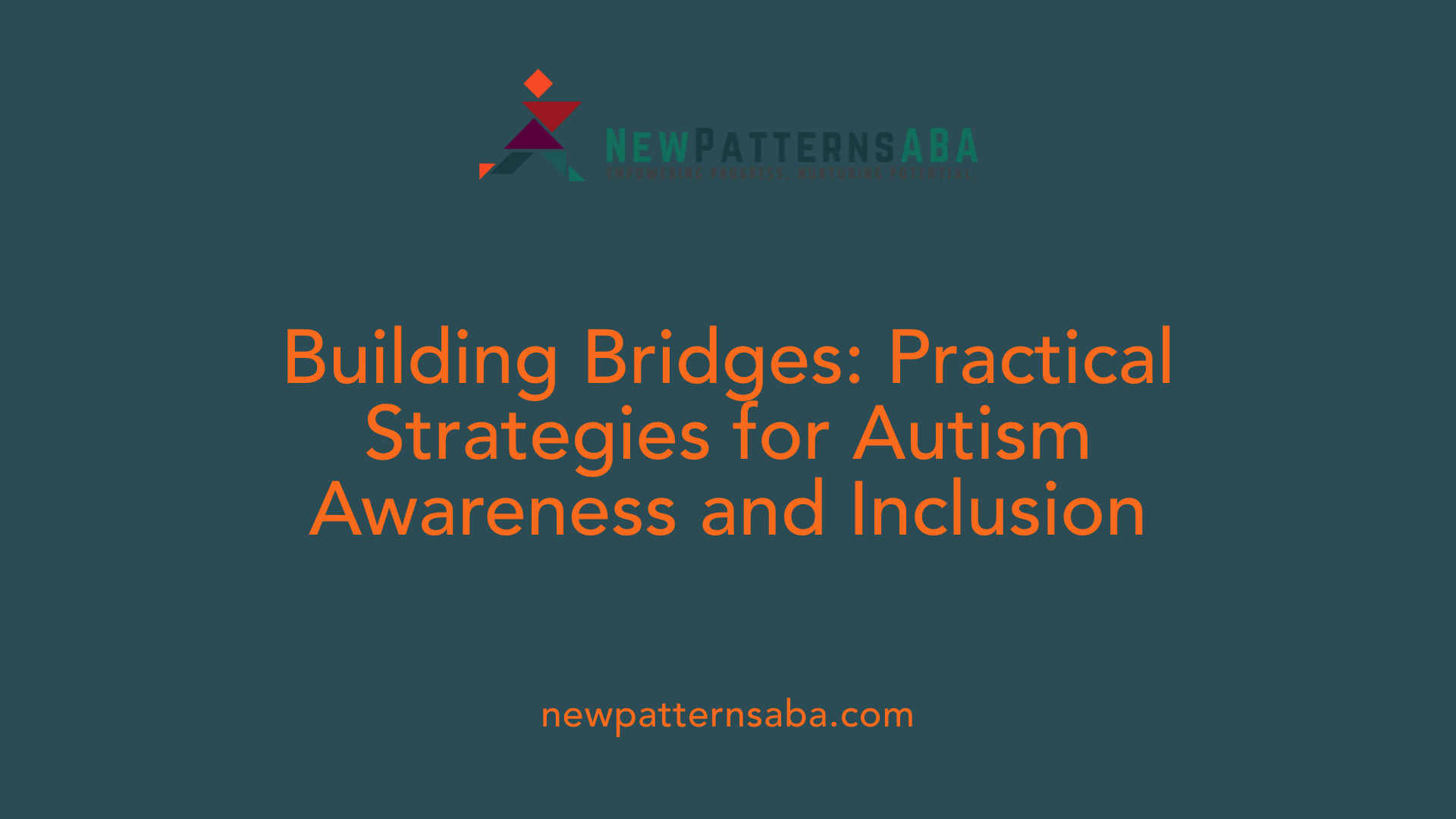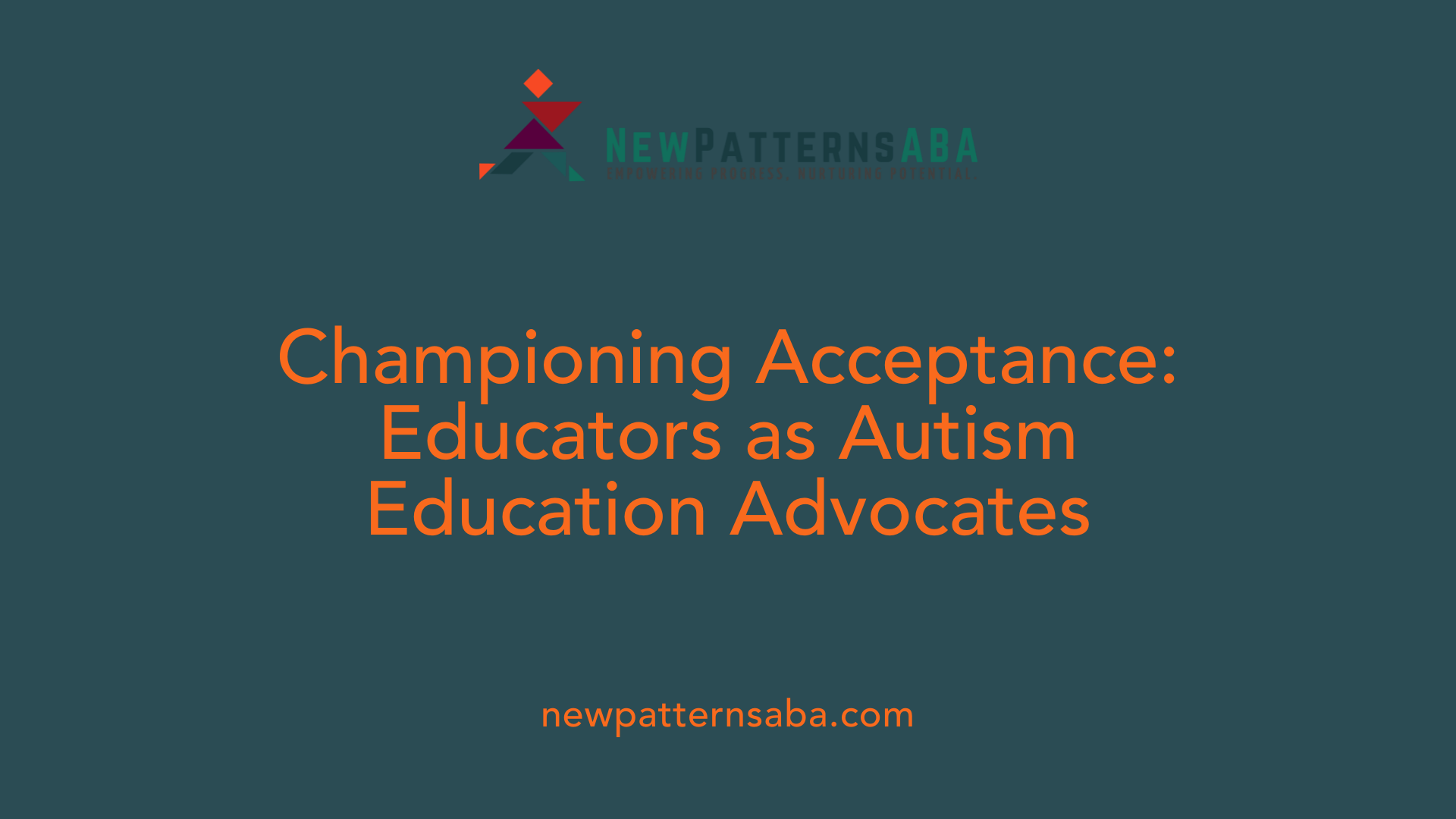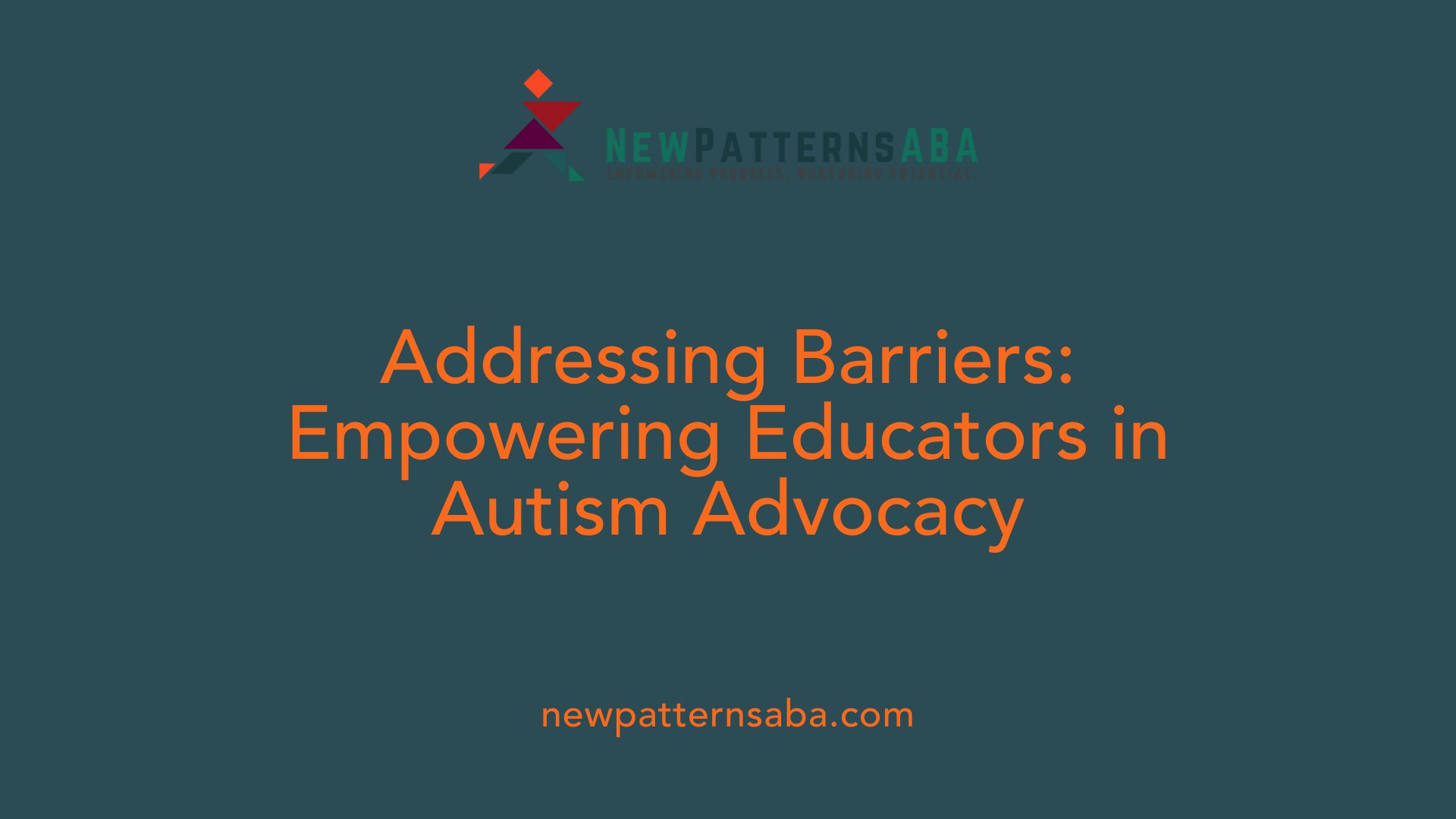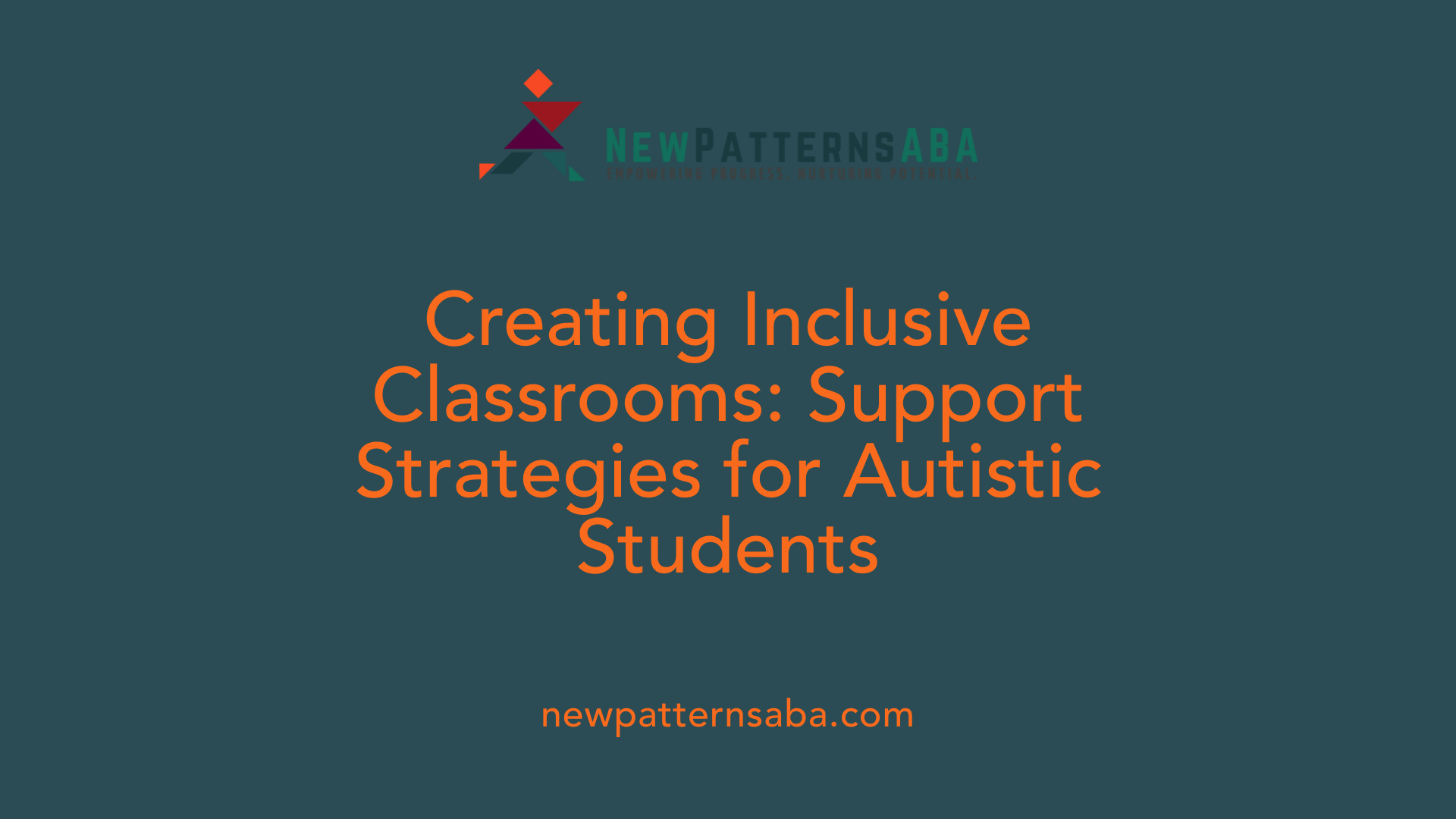Building Bridges: The Critical Role of Educators in Autism Advocacy
Understanding the Integral Role of Educators in Supporting Autism Spectrum Disorder
Educators are at the forefront of autism advocacy and support within educational environments and beyond. Their responsibilities extend beyond teaching to include fostering acceptance, implementing tailored strategies, and collaborating with families and advocacy groups. This comprehensive approach is necessary to create inclusive, supportive environments that empower students with autism and support their long-term development.
Defining Educator Responsibilities in Autism Support and Advocacy
What are the key roles and responsibilities of educators in autism advocacy and support?
Educators hold a crucial position in supporting students with autism by fostering awareness and understanding of ASD. They are responsible for creating classroom environments that are both inclusive and predictable, which helps meet the diverse needs of autistic students. This includes using visual supports like schedules, labels, and communication tools, as well as implementing sensory accommodations and structured routines.
Collaboration is essential; teachers work closely with families, administrators, and advocacy groups to develop and carry out individualized education plans (IEPs) that provide the necessary supports for each student. Ensuring compliance with laws such as IDEA and Section 504 guarantees that students receive fair and appropriate educational services.
Beyond academics, educators play a vital role in promoting social integration. They teach peers about inclusion and respect, helping to reduce stigma and encourage positive peer interactions. Supporting students in developing self-advocacy skills—like expressing their needs and preferences—empowers them to participate actively in their education.
Overall, teachers act as advocates by not only adjusting their instructional strategies but also by fostering a school culture of acceptance and understanding. These efforts contribute significantly to creating safe, supportive environments where students with autism can thrive academically, socially, and emotionally.
Strategies and Resources to Enhance Autism Awareness and Inclusion

What strategies and resources can educators use to promote autism awareness and inclusion in schools?
Educators play a crucial role in creating inclusive environments where students with autism can thrive. One effective approach is implementing differentiated instruction, tailoring lessons to meet diverse learning styles and sensory needs. This involves using visual supports, social narratives, and sensory tools to help students understand expectations and manage their environment.
Visual supports, such as schedules, labels, and pictorial communication aids, help children with autism comprehend and participate in daily activities. Social narratives teach appropriate social interactions, reducing anxiety and promoting positive peer relationships. Sensory tools like noise-canceling headphones, tactile toys, or calming visuals can assist students in self-regulation.
Creating a welcoming classroom culture involves promoting peer activities that foster inclusion. Pairing students with buddies, organizing group projects, and encouraging empathy through classroom discussions help build understanding and friendships.
Professional development opportunities are vital for teachers to stay informed about autism and inclusive practices. Training on universal design for learning (UDL) principles ensures that classroom materials and teaching methods are accessible to all learners.
School-wide initiatives like autism awareness campaigns and celebrating events such as Autism Acceptance Month inspire a culture of acceptance. These efforts include guest speakers, informational assemblies, and student-led activities that educate the entire school community.
Collaboration with families, support staff, and specialists enhances tailored support for students with autism. When educators and families work together, they can develop and implement effective strategies that promote success.
In summary, a combination of classroom adjustments, targeted resources, and school-wide practices cultivates an environment of understanding, respect, and inclusion, ensuring that students with autism are supported academically, socially, and emotionally.
The Contribution of Educators to Autism Education and Advocacy

How can educators contribute to autism education and advocacy efforts within schools and communities?
Educators play a vital role in shaping a more inclusive environment for students with autism. Their contributions extend beyond classroom instruction to becoming advocates for awareness and acceptance. One of the most impactful ways educators can contribute is by actively listening to and valuing autistic voices. Recognizing and incorporating the experiences and perspectives of autistic individuals help create respectful and neuro-affirming practices.
Implementing supportive classroom strategies is another critical aspect. Teachers can design environments accommodating sensory sensitivities by controlling noise levels, lighting, and odors. They can also promote routines and structured activities that provide predictability, helping students feel safe and engaged. Visual supports such as schedules, labels, and communication aids assist in understanding and independence, reducing frustration and behavioral challenges.
Using respectful language is essential. Employing identity-first language, such as “autistic person,” affirms individual identities and fosters respecting differences. Teachers should prioritize communication approaches that honor each student’s preferences, whether through speech, gestures, or augmentative tools.
Collaboration stands at the heart of effective advocacy. Educators need to work closely with families, healthcare providers, and community organizations to ensure students receive necessary services and accommodations. Such partnerships promote awareness, facilitate resource sharing, and foster inclusive attitudes within the wider community.
Notably, educators on the autism spectrum bring unique insights and serve as inspiring role models. Their firsthand experiences can influence peers and students, breaking stereotypes and demonstrating acceptance and resilience. Through their example, they help normalize neurodiversity and foster a culture of inclusion.
In summary, educators contribute to autism advocacy through listening, implementing supportive strategies, respecting communication differences, collaborating broadly, and exemplifying acceptance. Their efforts help build educational and social environments where all students can thrive and be valued for their individuality.
Overcoming Challenges in Autism Advocacy within Educational Settings

What challenges do educators face in autism advocacy, and how can they address these challenges?
Teachers and school staff frequently encounter obstacles when advocating for students with autism. A primary challenge is the lack of specialized training in autism spectrum disorder (ASD). Many educators are not equipped with the latest knowledge of effective teaching strategies or support techniques tailored to ASD. To combat this, schools should invest in ongoing professional development focused on autism education, including training on behavioral interventions, communication supports, and sensory accommodations.
Limited resources and support are another significant issue. Schools often struggle with insufficient funding for necessary materials, adaptative technologies, or dedicated specialists like speech and occupational therapists. Addressing these gaps requires administrative commitment to allocate resources effectively and seek external funding or grants when necessary.
Managing challenging behaviors, such as meltdowns, sensory overload, or communication breakdowns, demands a deep understanding of ASD characteristics. Implementing evidence-based approaches like Applied Behavior Analysis (ABA) techniques and Picture Exchange Communication System (PECS) can be highly effective. Training educators to use these tools and strategies is essential.
Collaboration hurdles can hinder advocacy efforts. Teachers, families, healthcare providers, and administrators must work together smoothly, which is often not seamless. Regular communication, clear policies, and shared goals foster cooperation. Creating multidisciplinary teams dedicated to individual student plans enhances consistency and support.
Finally, establishing sensory-friendly environments is crucial. Classrooms that are overly noisy, brightly lit, or contain strong odors can overwhelm children with autism. Simple adjustments such as dimmable lights, quiet corners, and sensory tools like noise-canceling headphones create calmer learning spaces.
To successfully navigate these challenges, schools should prioritize ASD-specific training, allocate necessary resources, promote collaborative planning, and design inclusive, sensory-sensitive classrooms. These steps build a foundation for effective advocacy and positive educational outcomes.
The Importance of Educator Involvement in Support Networks and Collaboration

Why is educator involvement crucial in autism support networks and collaboration with parents and advocates?
Educator participation is essential because it ensures a unified, effective approach to supporting students with autism. Teachers are central to implementing individualized strategies that meet each child's unique needs. Through collaboration with families, healthcare professionals, and advocacy groups, educators gain valuable insights into a student's communication styles, sensory preferences, and behavioral patterns.
By actively engaging in support networks, teachers help create a safe, inclusive environment conducive to learning and development. They participate in meetings such as Individualized Education Program (IEP) or 504 Plan reviews, where they advocate for necessary accommodations and services. This collaboration fosters mutual trust, encourages open communication, and respects the student's voice—factors that empower students to participate actively in their education.
Moreover, educators help translate evidence-based methods into everyday classroom practices. For example, employing peer-mediated activities or visual supports can improve social interaction and understanding among students with autism. These interventions are more effective when educators work closely with specialists and families to customize approaches.
Building a strong support network also promotes a culture of inclusion and trust within schools. When teachers, families, and advocates share insights and best practices, they develop a cohesive community dedicated to the well-being of students with autism. This shared effort not only enhances academic success but also promotes social integration and independence.
Effective teacher involvement ultimately contributes significantly to the positive growth and dignity of autistic students. It helps ensure that they receive consistent, respectful, and tailored support—creating educational environments where all students can thrive.
Supporting Autistic Students Through Classroom Adjustments and Social Relationships

Why is educator involvement crucial in autism support networks and collaboration with parents and advocates?
Educators play a vital role in the support network for students with autism. Their active involvement fosters collaboration among families, school teams, healthcare professionals, and community advocates. When teachers understand each child's unique needs, they can tailor classroom strategies and support plans such as IEPs or 504 plans.
Building strong relationships based on trust and open communication helps create an inclusive and respectful classroom environment. Teachers who actively engage with families gain valuable insights, which enable them to implement effective, evidence-based practices like peer-mediated interventions that improve social skills and academic achievement.
Moreover, educator participation encourages student agency and independence, promoting positive social interactions and dignity. This collaborative approach strengthens the overall school culture of inclusion, enhancing the long-term outcomes for students with autism.
Adjustments for sensory sensitivities
Many children with autism have sensory sensitivities that can make traditional classroom settings overwhelming. Adjustments such as controlling lighting, reducing noise levels, and eliminating strong odors can significantly improve their comfort. Creating designated quiet areas and providing sensory tools like headphones or fidget devices also help students self-regulate.
Promoting positive social interactions
Facilitating positive peer relationships is essential. Teachers can organize inclusive activities that promote empathy and understanding. Teaching peers about autism and encouraging respectful social norms help integrate students seamlessly into social groups.
Teaching peer awareness and acceptance
Educators should include lessons on diversity and acceptance, highlighting the strengths and differences of students with autism. Peer awareness programs help dispel stereotypes and foster a culture of support within the classroom.
Safeguarding confidentiality and promoting dignity
Respecting students' privacy and preferred identities is critical. Teachers must handle sensitive information discreetly and avoid singling out students based on their autism diagnosis. Maintaining confidentiality helps preserve students' dignity and encourages a trusting classroom environment.
Implementing preventative measures against bullying
Autistic students are more vulnerable to bullying. Teachers and staff should proactively prevent harassment by establishing clear anti-bullying policies, monitoring social interactions, and promoting an inclusive culture. Educating students on kindness and empathy can also reduce instances of bullying and support the emotional well-being of students with autism.
| Aspect | Strategies | Benefits |
|---|---|---|
| Sensory adjustments | Lighting control, sensory tools | Increased comfort, reduced overload |
| Social promotion | Peer activities, social stories | Better social integration |
| Privacy | Confidentiality, respectful language | Dignity and trust |
| Bullying prevention | Anti-bullying policies, awareness | Safer, supportive environment |
| Teacher involvement | Collaboration with families, training | Better student outcomes |
Engaging actively in these areas helps educators create a nurturing atmosphere where students with autism can thrive academically, socially, and emotionally.
Fostering a Culture of Inclusion and Continuous Improvement
The role of educators in autism advocacy is multi-faceted and vital for creating inclusive, supportive environments where students with autism can thrive academically, socially, and emotionally. Through dedicated advocacy, strategic implementation, ongoing collaboration, and a proactive approach to overcoming challenges, educators can significantly impact the lives of autistic individuals. Promoting awareness, fostering acceptance, and working within support networks enable teachers to develop enriching educational experiences that respect individual differences and uphold students’ rights. As educational professionals, continual learning and advocacy are essential to advancing inclusion and ensuring that every student with autism receives the understanding and support they deserve.
References
- Autism Advocacy for Parents and Educators
- The Role of an Autism Advocate in the Education System
- Parents' Experiences in Advocating for Children and Youth ...
- Support You Can See (and Feel): Teaching Children with ...
- Teaching with Autism
- How general education teachers can support students with ...
- Autism in the classroom: Strategies for success
- Teaching Students with Autism: A Guide for Educators | NEA
- Effective Classroom Strategies for Teaching Students with ...






